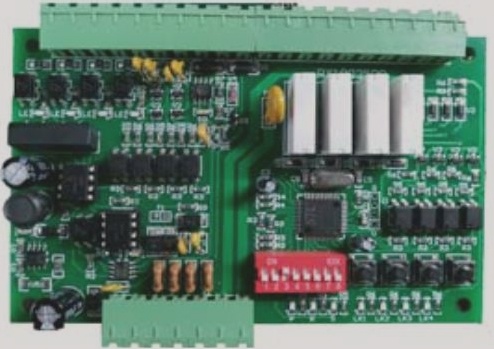1. Many customers often notice the wide array of PCB colors available in the market.
2. The most common PCB colors include black, green, blue, yellow, purple, red, and brown, along with some unique options like pink and white.
3. Traditionally, black PCBs are viewed as high-end products, while red and yellow are often associated with lower-end options. Is this perception accurate?
4. PCB copper layers that lack solder mask coating are prone to oxidation when exposed to air.
5. Both the front and back sides of the PCB consist of copper layers. During production, these copper layers may have a smooth, unprotected surface, regardless of whether the process is additive or subtractive.
6. While copper’s chemical properties are less reactive than those of aluminum, iron, or magnesium, it can easily oxidize in the presence of water.
7. Given that oxygen and water vapor are present in the air, oxidation occurs rapidly on exposed pure copper surfaces.
8. Due to the thinness of the copper layer in PCBs, oxidized copper becomes a poor electrical conductor, significantly impacting the PCB’s overall electrical performance.
9. Example: LED makeup mirror control panel.

1. To prevent copper oxidation, separate soldered and non-soldered areas of the PCB during soldering, and protect the PCB surface, engineers developed a special coating. This paint can be easily applied to the PCB’s surface, forming a protective layer that effectively blocks contact between copper and air. This coating is known as a solder mask, and the material used is specifically referred to as solder mask.
2. Since it is called a lacquer, it comes in various colors. Indeed, the original solder mask can be colorless and transparent; however, PCBs often need printed markings for ease of maintenance and manufacturing. The transparent solder mask only reveals the PCB’s background color, which may not be visually appealing for manufacturing, repair, or sale. Thus, engineers introduced a variety of colors for the solder mask, resulting in black, red, and blue PCBs.
3. The black PCB makes traces difficult to see, complicating maintenance efforts. From this perspective, the color of the PCB does not correlate with its quality. The distinction between black PCBs and other colors, like blue or yellow, lies solely in the solder mask applied at the end. If the PCB design and manufacturing processes are identical, the color will not affect performance or heat dissipation.
4. Concerning black PCBs, the surface traces are nearly entirely obscured, leading to significant challenges during maintenance, making it less convenient for manufacturing and usage. Consequently, in recent years, there has been a shift away from using black solder masks in favor of dark green, dark brown, dark blue, and other colors to facilitate manufacturing and maintenance.
5. With that said, the issue of PCB color is generally understood. The notion that “color signifies high-end or low-end” arises because manufacturers often associate black PCBs with premium products, while colors like red, blue, green, and yellow are linked to lower-end products. In summary, the product defines the color’s significance, not the color itself.
6. Now, let’s discuss the advantages of using precious metals like gold and silver on PCBs. When some manufacturers promote their products, they often highlight the use of special processes such as gold plating and silver plating. So, what purpose does this process serve?
7. The PCB surface requires exposed copper for soldering components, which creates pads—small, rectangular or round areas. As mentioned earlier, copper used in PCBs is prone to oxidation. After applying the solder mask, the only exposed copper is on the pads.
8. If the copper on these pads oxidizes, it will not only hinder soldering but also significantly increase resistivity, adversely affecting the final product’s performance. Therefore, engineers have developed various methods to protect the pads. These methods include plating with inert metals like gold, applying a layer of silver through a chemical process, or using a specialized chemical film to shield the copper layer from air exposure.
9. For the exposed pads on the PCB, the copper layer is directly visible, necessitating protection against oxidation. Thus, both gold and silver serve the primary purpose of preventing oxidation, safeguarding the pads, and ensuring a high yield in the subsequent soldering process.
10. However, the choice of metal imposes specific requirements regarding the storage duration and conditions of PCBs in production facilities. As a result, PCB manufacturers typically employ vacuum plastic packaging machines to package PCBs post-production and prior to delivery, maximizing protection against oxidation.
11. Before final components are soldered onto the board, manufacturers must assess the oxidation level of the PCBs to eliminate oxidized units, ensuring a high-quality yield. Ultimately, the boards received by consumers have undergone extensive testing. Even after prolonged use, oxidation is predominantly confined to the plug-in connection areas, with minimal impact on the pads and soldered components.




